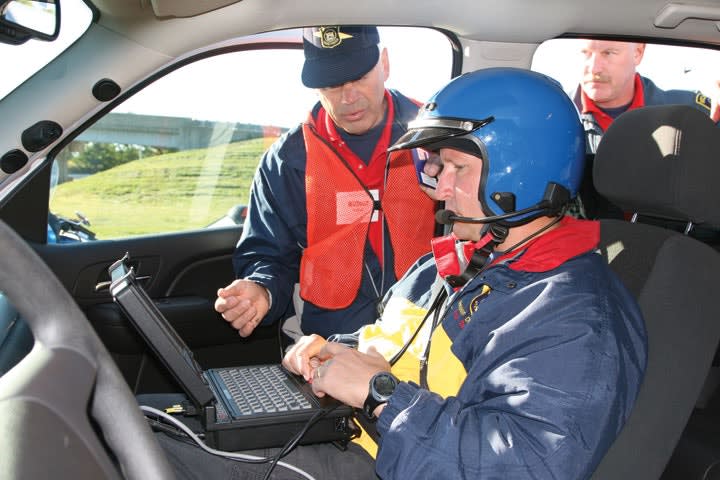The Michigan State Police conduct their vehicle tests every autumn, taking a look at the next year's crop of would-be patrol vehicles. Acceleration, braking, and maximum speed are tested at the Chrysler Proving Grounds, in Chelsea, Mich. High-speed pursuit/emergency handling characteristics-otherwise referred to as vehicle dynamics-are evaluated at the Grattan Raceway, located in west-central Michigan. The Proving Grounds tests are conducted on a Saturday and the Grattan Raceway tests take place on the following Monday. Sunday is reserved as a "rain day." In their efforts to provide a fair and balanced testing protocol, MSP makes every effort to avoid wet road conditions.
Of course, rain conditions are typical for patrol operations and testing on wet roads would be a valid measure of a vehicle's handling capabilities. The problem lies in ensuring that each and every vehicle has the same testing environment. Because wet conditions can vary from minute to minute, the Michigan State Police have opted to avoid such conditions in the interest of fair testing protocols.
Each year, different manufacturers bring their vehicles to be tested. The vehicles are production models equipped as they would be if they were ordered and purchased from the factory by your city or county. Vehicles are tested in a "slick-top" configuration and without "A" pillar spotlights, in order to keep the tests standardized for all vehicles. Additionally, the vehicles are run with production model tires that are available as original factory equipment.
There are two different categories of vehicles tested. One category comprises vehicles that would be suitable for "general service" patrol that may be subjected to high-speed and pursuit driving. The second is for vehicles that wouldn't normally be pressed into that kind of service and are more likely to be used as "special service" vehicles. These are the four-wheel-drive vehicles, the SUVs, and the pickup trucks. Last year, a third category was added for motorcycles.
Automobiles such as the ubiquitous Ford Crown Victoria make up the general service category, accompanied by some specially designed sport utility vehicles such as the Chevrolet Tahoe. All vehicles are subjected to the acceleration, braking, and top speed testing. Only the general purpose patrol vehicles and a few specially designated SUVs participate in the high-speed handling (vehicle dynamics) tests.












